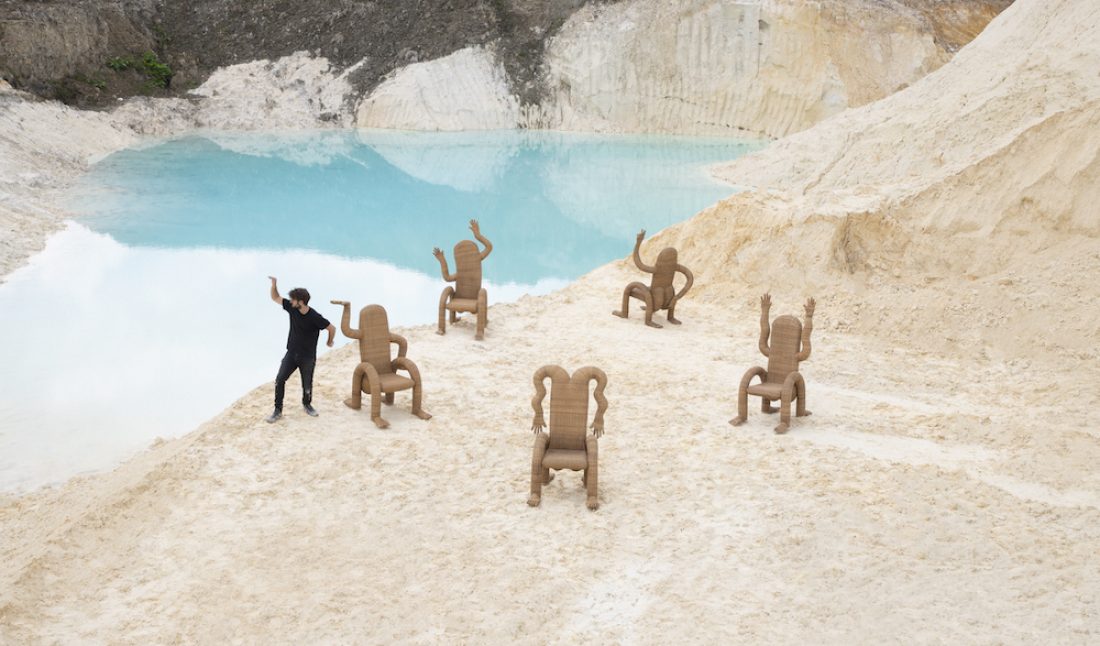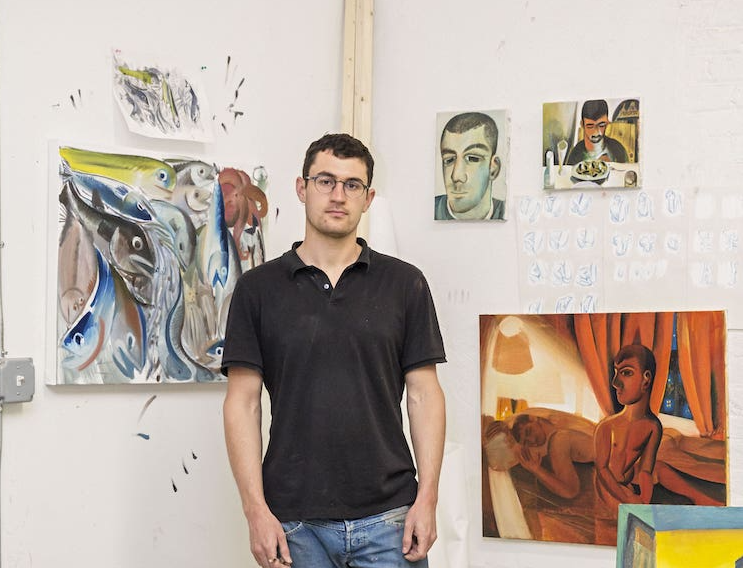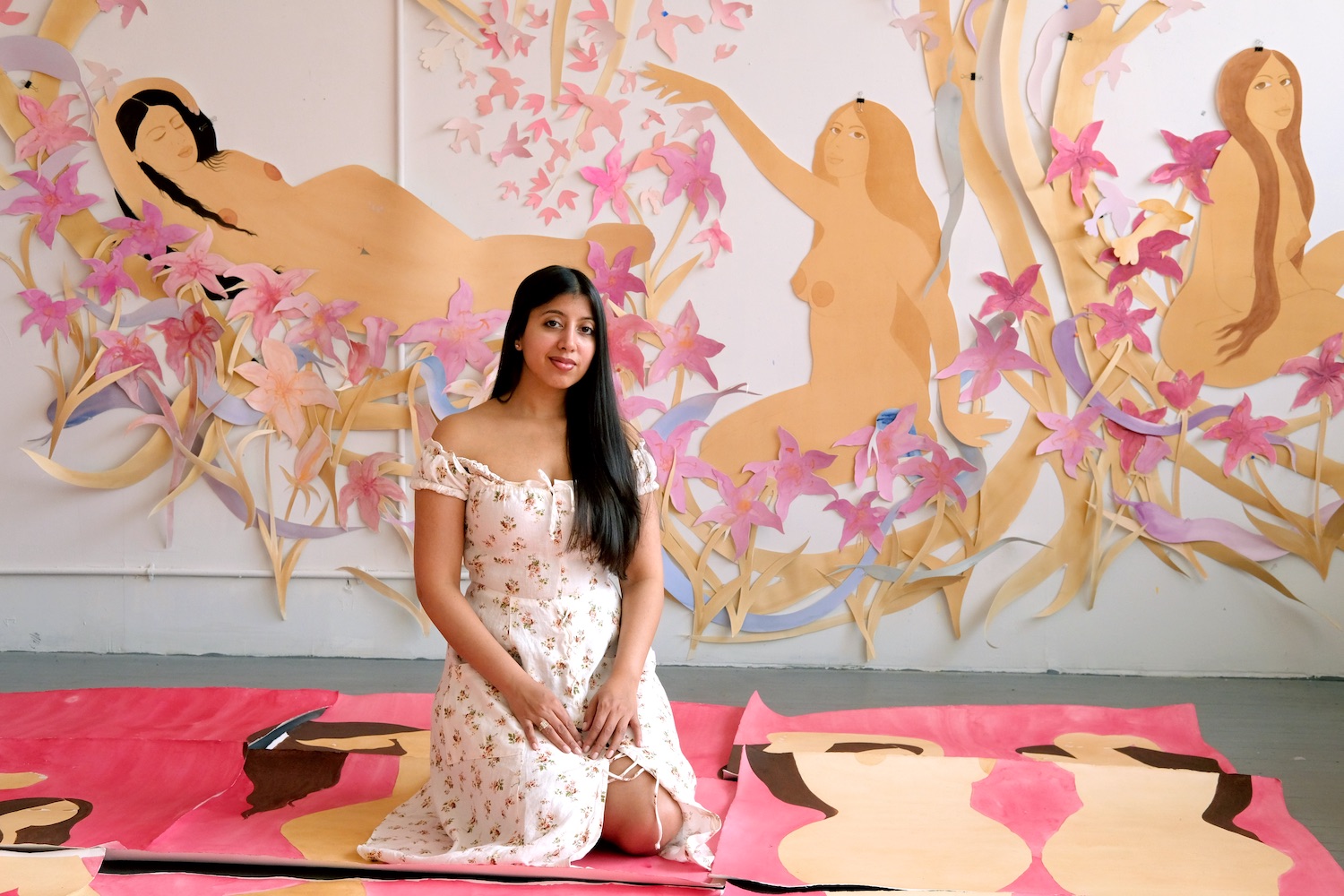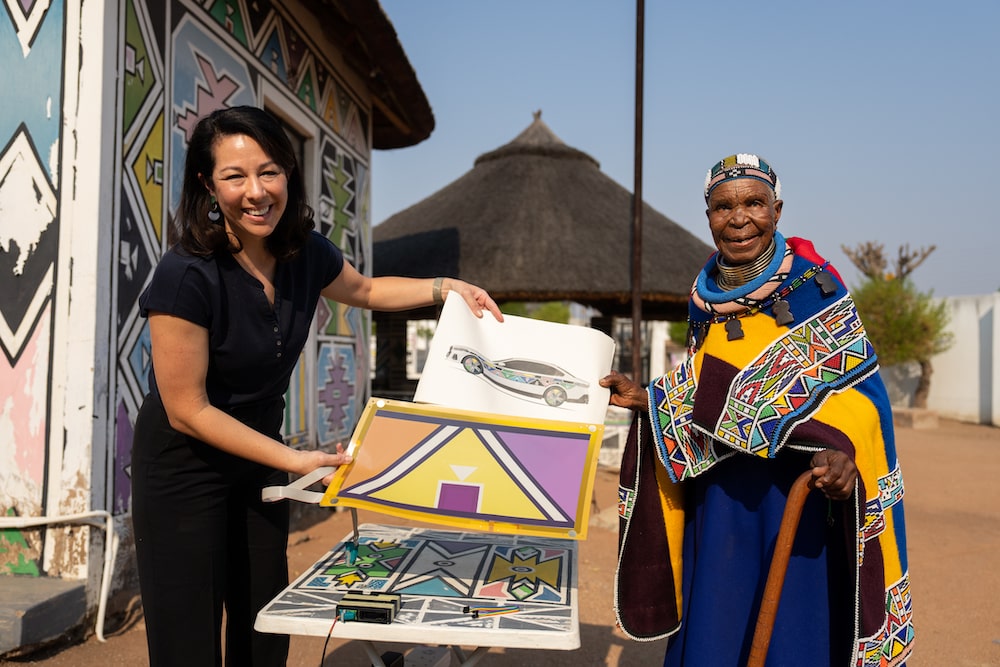Overlooking the city of Medellín, Chris Wolston’s home in Colombia is surrounded by a lush landscape. He brings the vibrancy of his surrounding into his studio in the city’s center, where he creates objects like flora-filled mirrors, anthropomorphic wicker seating, and terra-cotta chairs that double as planters. Using techniques explored in Colombia such as sand-casting and weaving—and even combining those for a recent exhibition at Nina Johnson gallery in Miami—Wolston imbues his material experimentation with a sense of play.
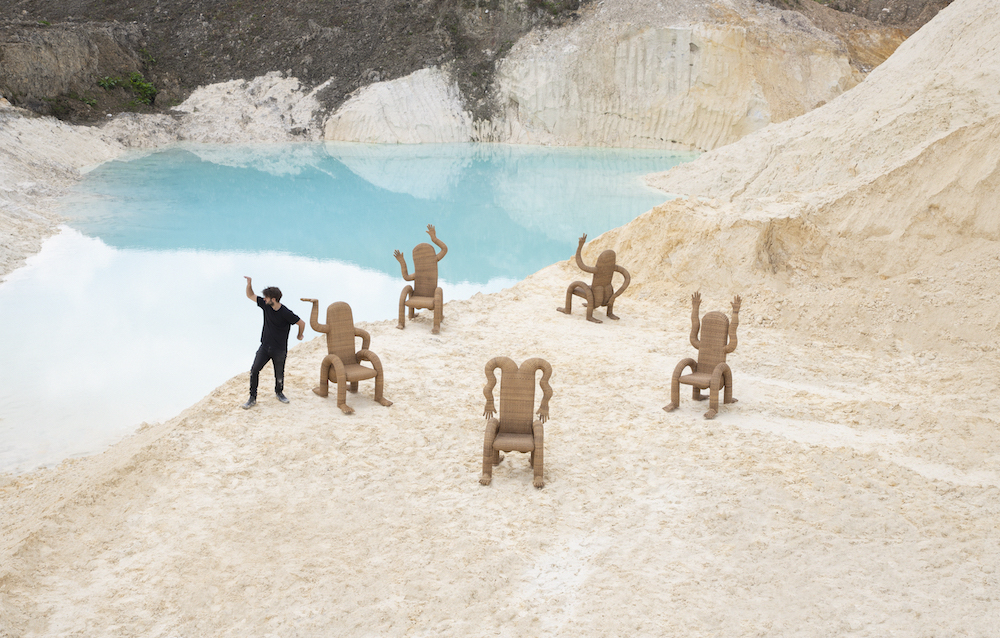 Chris Wolston, “Nalgona Chairs,” 2021, photo by David Sierra, courtesy to the artist.
Chris Wolston, “Nalgona Chairs,” 2021, photo by David Sierra, courtesy to the artist.
Over the past year he has realized how much joy his work can bring to others. And he has embraced it, with a new series of Nalgona Chairs that wiggle and wave in poses that delight. Wolston saw the potential in providing an escape at home, making pieces filled with life and a dash of much-needed humor.
Whitewall spoke with the designer, currently working on a glass table with Vissio and a forthcoming show at Casa Perfect LA, about the magic of Medellín and why he’s a fan of unpredictability.
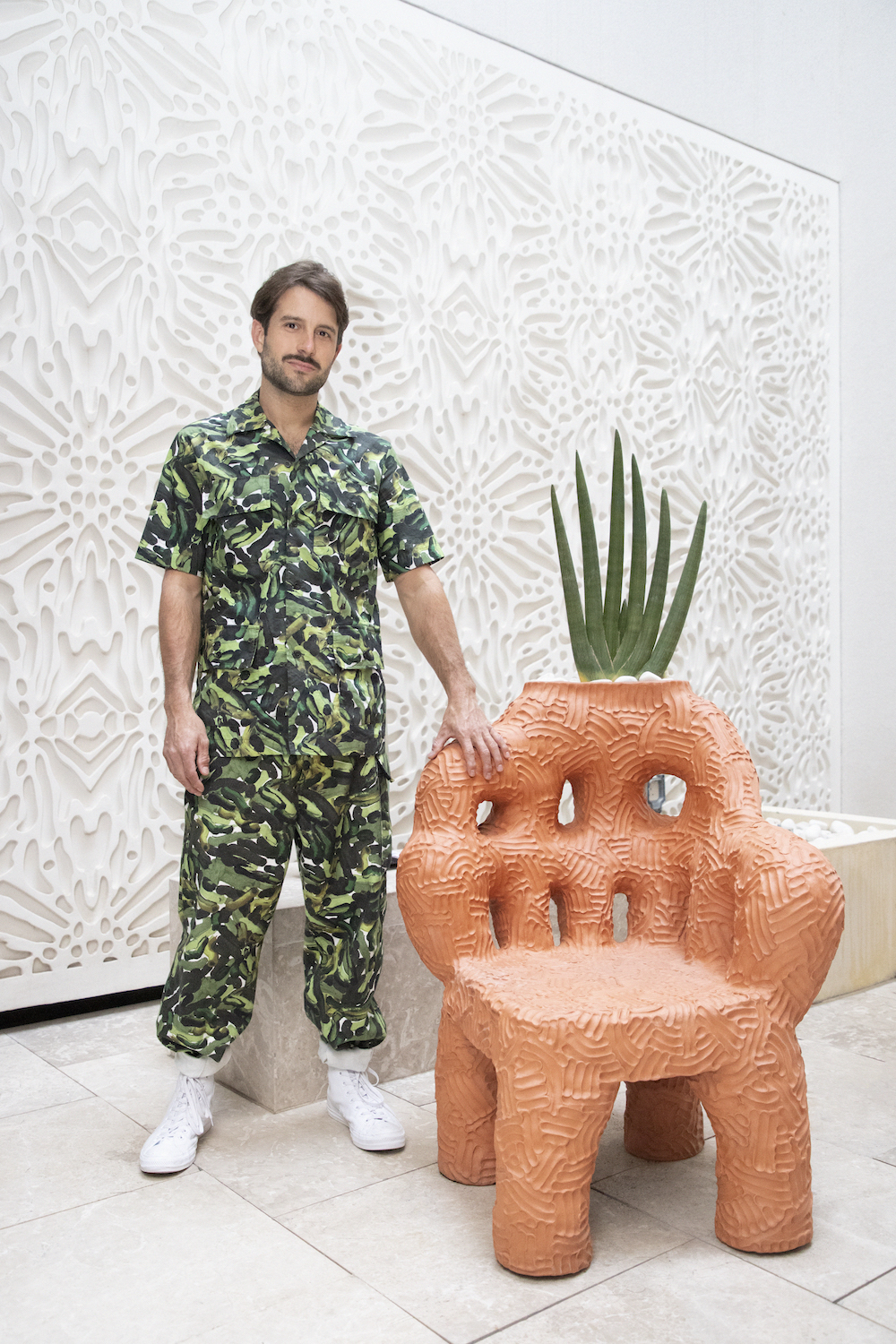 Portrait of Chris Wolston by David Sierra.
Portrait of Chris Wolston by David Sierra.
WHITEWALL: Can you tell us about the new collection of Nalgona Chair poses you recently produced?
CHRIS WOLSTON: During quarantine, I started to think a lot about escapism and fantasy, and at the same time there was an uncanny spike in interest in the Nalgona Chairs, I think because they’re playful and lighthearted. They offer an embrace, which is something everyone was sorely missing at the time. I came to the realization that through their playfulness and sense of humor, the Nalgonas put people at ease. They offer an escape. I took that to heart when working on this new collection and wanted to extend this sense of playfulness and delve deeper into it through more dynamic body forms and humorous poses.
WW: What was the inspiration for the Nalgona Chair, and how did that lend itself well to working with wicker?
CW: I wanted to create something with a different sensibility than aluminum. Something more welcoming on a physical level. Here in Colombia, wicker is very accessible. It’s an important part of the material culture. While most of the wicker I see is very traditional, I became interested in applying it to abstract forms. My use of the human form arose from this thought process. I was thinking about the body in relation to furniture. Aluminum had been very voluptuous but cold—I wanted to make work that would react to that and be very welcoming to the human body.
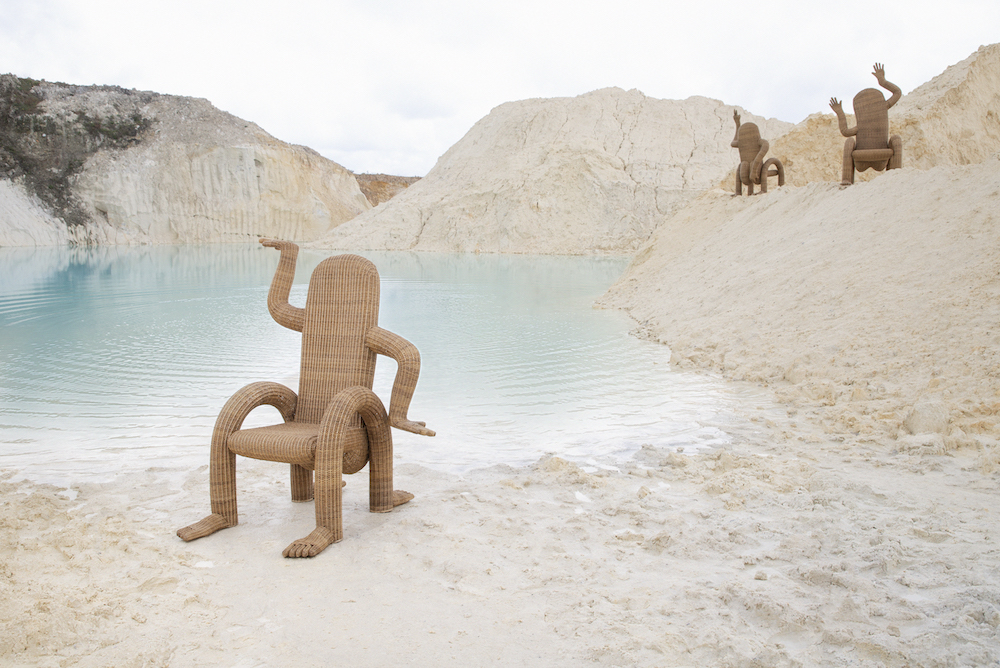 Chris Wolston, “Nalgona Chairs,” 2021, photo by David Sierra, courtesy to the artist.
Chris Wolston, “Nalgona Chairs,” 2021, photo by David Sierra, courtesy to the artist.
WW: You also recently debuted some new sculptures in the “Vessels” exhibition at Nina Johnson gallery, Retoño and Capullo, made of sand-cast aluminum and wicker. What was it like to create these works, and why did you want to combine these two mediums and techniques?
CW: Presenting at Nina Johnson alongside Betty Woodman, I wanted to create something both aesthetically and materially new, but that would also represent my existing body of work. Both are materials I had worked with previously. Marrying them together was a way of incorporating previous work while also exploring new territory. For the vessels, which were sand- cast, we made welded armatures—almost like line drawings made from steel rods. This structure added support to the large volume of sand used in the casting process, thus enabling us to work on a larger scale.
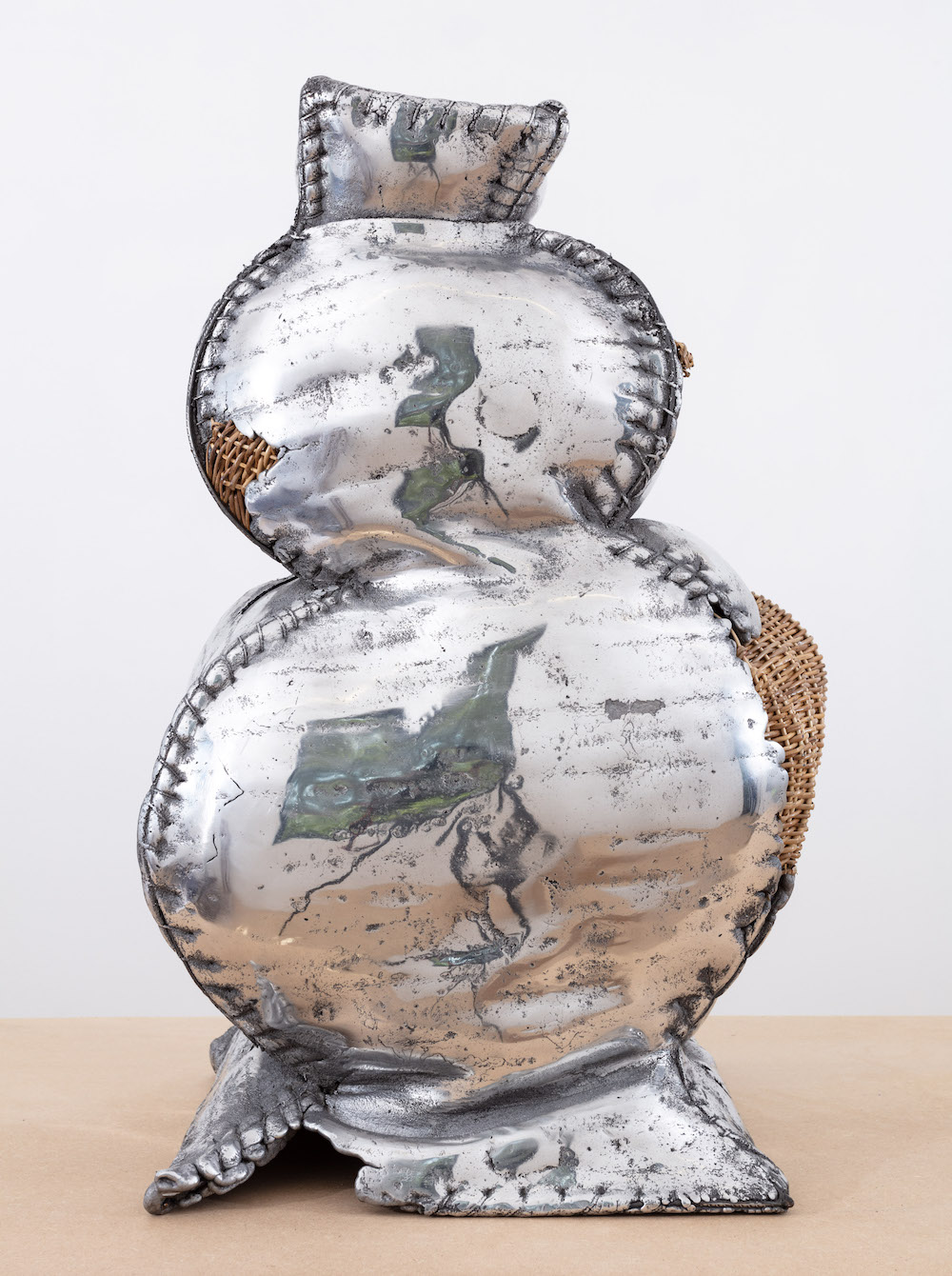 Chris Wolston, “Sprout Vessel,” 2021, at Nina Johnson Gallery, courtesy to the artist and The Future Perfect.
Chris Wolston, “Sprout Vessel,” 2021, at Nina Johnson Gallery, courtesy to the artist and The Future Perfect.
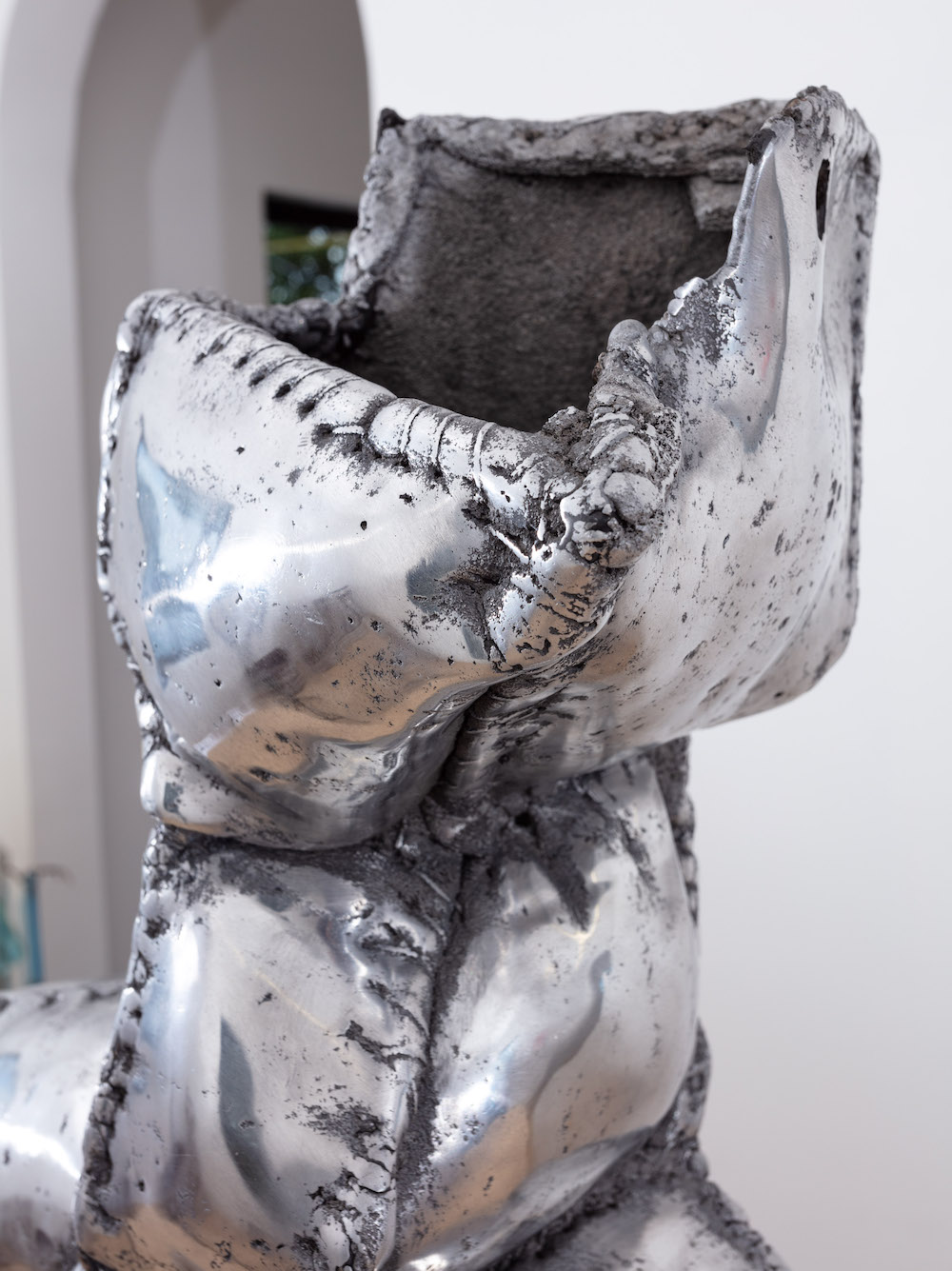 Chris Wolston, “Sprout Vessel,” 2021, at Nina Johnson Gallery, courtesy to the artist and The Future Perfect.
Chris Wolston, “Sprout Vessel,” 2021, at Nina Johnson Gallery, courtesy to the artist and The Future Perfect.
WW: You’ve said that the fluid culture of Colombia allows for more creativity than in the U.S. How does that play out when collaborating with the craftspeople you work with?
CW: There’s so much more potential here for discovery—for being seduced or surprised by material, because there’s less of a rigid set of rules. In general, it’s more laid-back; there’s more of an openness to experimentation and trying new techniques, rather than just assuming something won’t work. The vessels we did for Nina Johnson are a perfect example of this. There’s an extreme fluidity to both the form and the process. The introduction of wicker into these pieces is a direct result of this approach and ultimately has made them very special. Through operating in a setting that engenders greater flexibility, I’ve found that new ideas can develop instead of being thrown away.
WW: Can you tell us about your studio in Colombia? What is a typical day like for you there?
CW: My house overlooks the city despite being located in a temperate rainforest. I have plenty of space but never feel isolated. I wake up surrounded by trees and birds, the garden that I’ve grown, and my own chickens. There are flowers everywhere, lots of hanging plants. I wake up, have breakfast, and head down to the studio, which is right in Centro, in the thick of the city. My studio is in Prado Centro, a neighborhood built on a hill around the turn of the last century where eccentric residents were experimenting with and having fun combining new and old forms of architecture, building expansive emblematic homes. My studio building was built in 1920 and is in one of these homes, with colorful pigmented cement tile floors, terrazzo, and interior courtyard-gardens. Prado Centro was historically always very in vogue until the urban migration in the late seventies when the demographics changed drastically.
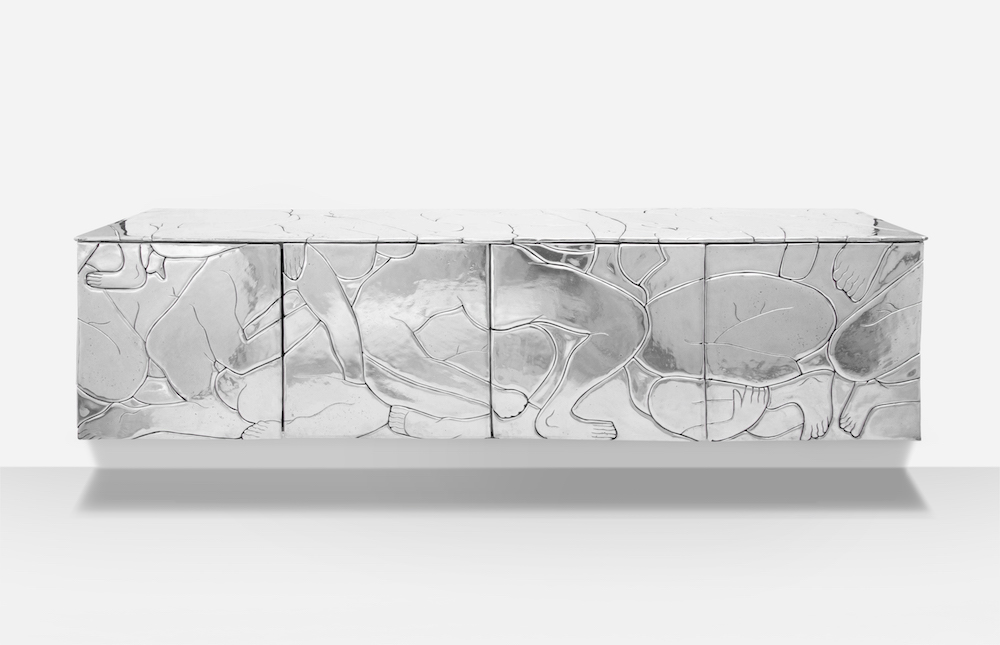 Chris Wolston, “Body Credenza and Mirrors,” 2021, photo by David Sierra, courtesy to the artist.
Chris Wolston, “Body Credenza and Mirrors,” 2021, photo by David Sierra, courtesy to the artist.
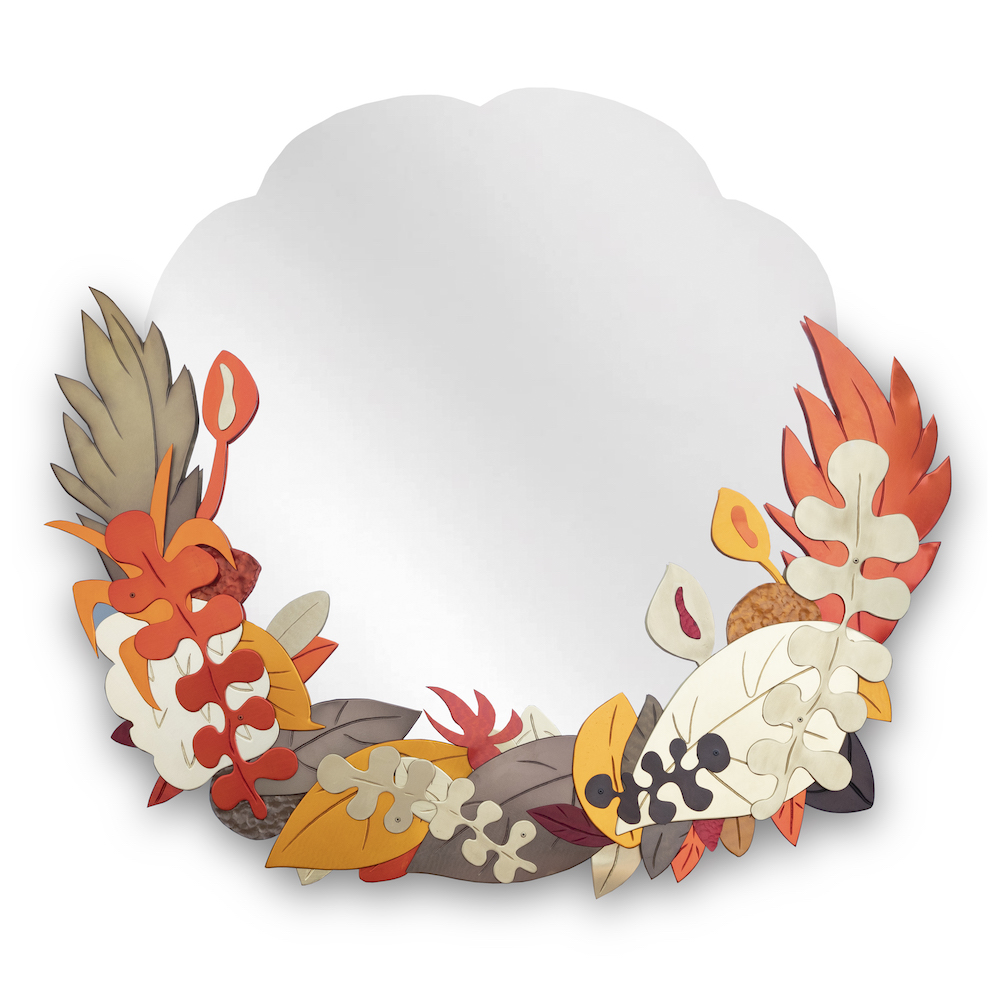 Chris Wolston, “Body Credenza and Mirrors,” 2021, photo by David Sierra, courtesy to the artist.
Chris Wolston, “Body Credenza and Mirrors,” 2021, photo by David Sierra, courtesy to the artist.
WW: How do you split your time between Colombia and New York? Was that different over the past year due to COVID?
CW: I had left Colombia right before quarantine, and right when the borders were initially closed, I was stuck. I returned as soon as I could and have been spending all of my time here. I’m here partially because it’s logistically easier not to fly so much, and the studio has three interior patios, a situation that creates great airflow. It’s been a safe place to work during COVID. I have a lot of space at my house, and an immediate connection to the outdoors, which is really important to me.
One of the reasons I like living in Colombia so much is the natural beauty. At my house there’s a mountain range and thousands of feet of dense, lush forest. If I look outside, to the left is an almost vertical, grassy slope of a mountain and to the right are dense pine forests. There are so many visual topographical references in one place.
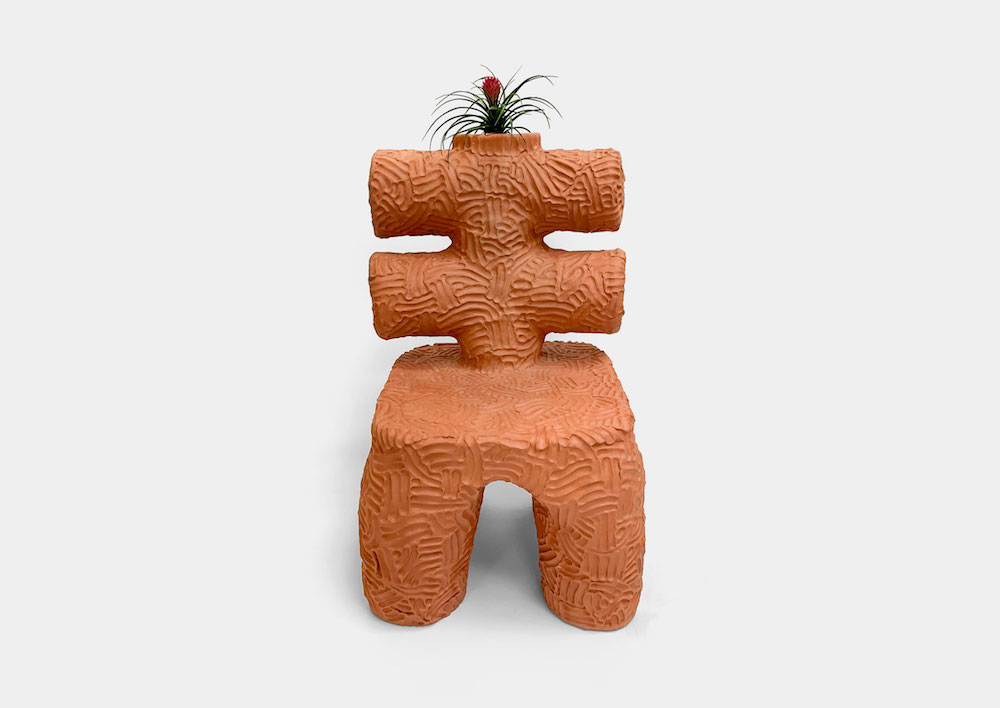 Chris Wolston, “Terracotta Chairs,” 2021, courtesy to the artist and The Future Perfect.
Chris Wolston, “Terracotta Chairs,” 2021, courtesy to the artist and The Future Perfect.
WW: How have the challenges or constraints of last year impacted your creative practice, your inspiration?
CW: One of the things I realized is that my work brings people joy. I enjoy making work with a sense of humor because it can increase people’s appreciation of my material agenda, but beyond that I just really enjoy that people enjoy it. In terms of business, I feel incredibly fortunate. People have been spending more time in their homes and have been redecorating. I think there’s been a huge uptick in business in the design industry. People’s income has been redirected inward, at improving their living spaces.
WW: We also see a lot of color and imagery of tropical plant life in your work. How does the environment of Medellín influence your practice?
CW: I’ve been really inspired by the natural beauty surrounding my house and garden. I’ve always loved the outdoors. As a kid my hobby was gardening. My twin brother would be playing soccer or lacrosse and I would be gardening. It’s interesting to think about now, seeing the influence it has in my work. Medellín is called “the city of eternal spring” because it’s close to the equator but at a high enough elevation that it stays relatively cool. So it’s a perpetual growing climate; it’s a continuous growing season. There’s a significant amount of natural life that isn’t ended by winter. We planted a ficus bush right before quarantine and when we came back it was a tree. With my garden here, I put plants in the ground and they just explode. In other places you couldn’t see a garden’s transformation, but here it’s right in front of your eyes. There’s magic to it. I find that magic inspiring.






